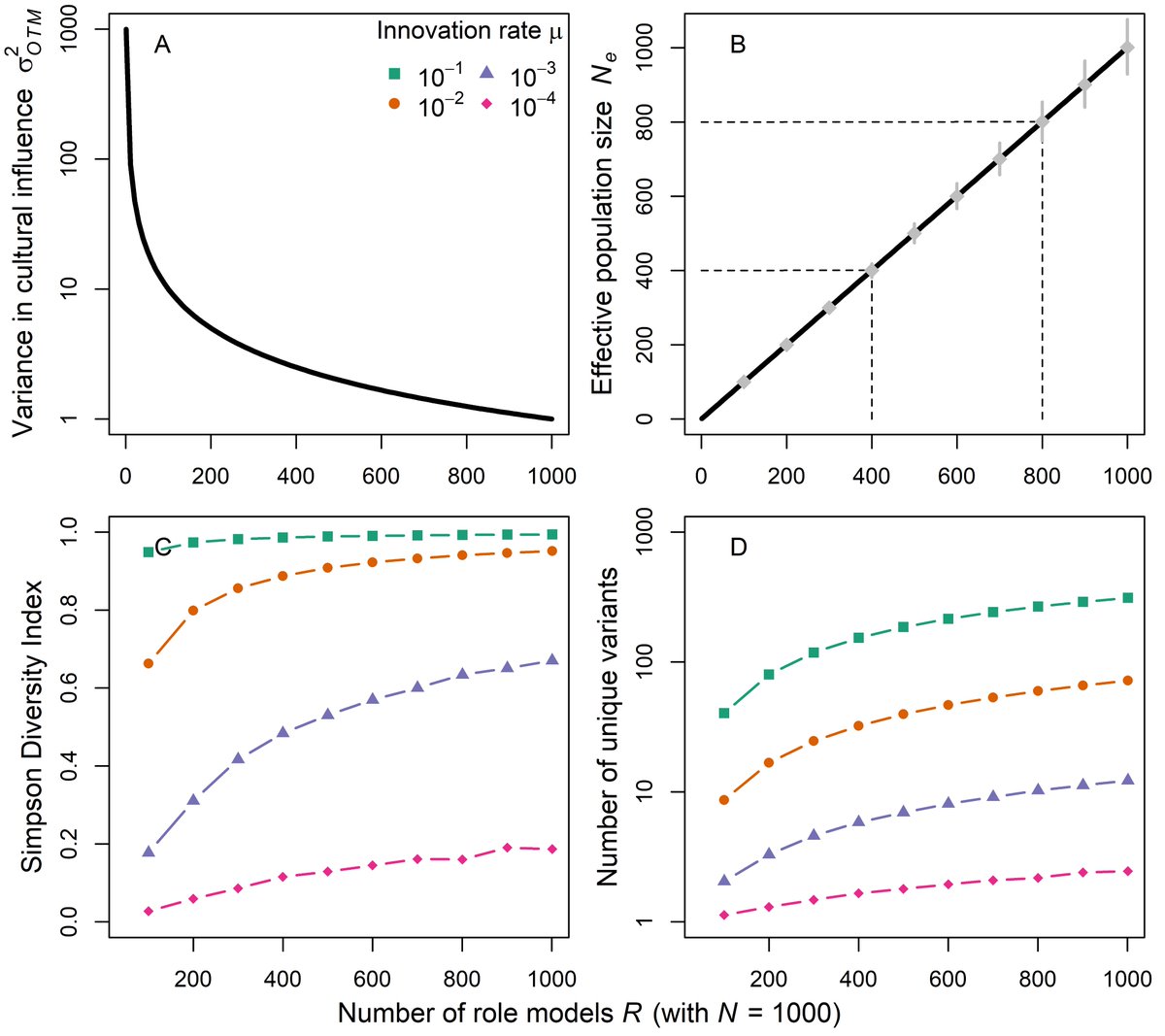
New preprint with Anne Kandler and @LaurelFogarty @tice_lab @MPI_EVA_Leipzig:
"Effective population size for culturally evolving traits"
Short Thread below...🧵
biorxiv.org/content/10.110…
"Effective population size for culturally evolving traits"
Short Thread below...🧵
biorxiv.org/content/10.110…
Population size has long been considered an important driver of cultural diversity and complexity.
Results from population genetics, however, show that it is not the census population size but the effective size that matters!
Results from population genetics, however, show that it is not the census population size but the effective size that matters!
The effective size is a fundamental concept in population genetics that quantifies the effect of drift on evolution and allows comparisons between complex populations in a way that would otherwise be impossible. 

We systematically examine effective population size for cultural evolution and study the effects of complex cultural phenomena on the effective size and emerging levels of cultural diversity:
1) One-to-many and frequency-dependent transmission can temporally or permanently lower effective population size compared to census numbers! 

The effects of connectedness (migration and cultural exchange) on effective population sizes are subtle, probably difficult to detect, and depend on the exact form of connectedness and effective size formulation. 

Finally, network density in random networks leaves Ne unchanged, scale-free networks tend to decrease and small-world networks tend to increase Ne compared to census numbers. 

Overall, these results highlight that census numbers cannot generally be relied on when evaluating hypotheses about the effects of demography on culture and inferring effective population sizes requires detailed knowledge about underlying cultural and demographic processes!
• • •
Missing some Tweet in this thread? You can try to
force a refresh



